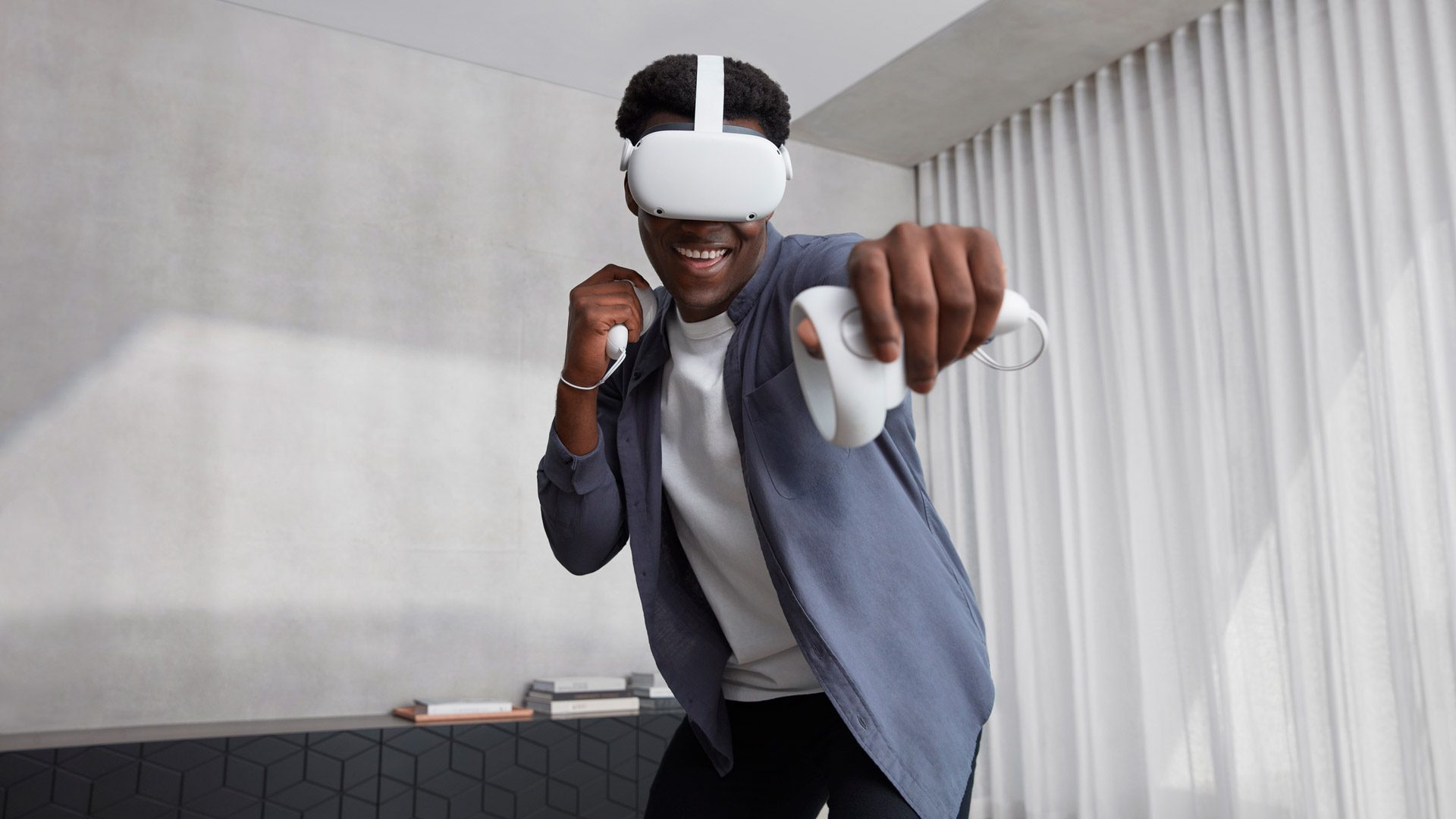According to a report by Bloomberg, Apple may be planning to release a VR headset with limited AR capabilities as soon as 2022, which is said to be a precursor to its long-rumored, full-fledged AR device. Now, a follow up report by The Information contends the company’s first VR headset will cost around $3,000 and include a bevy of items high on any VR enthusiast’s wish list.
Update (February 4th, 2021): Citing people with direct knowledge of the device, The Information’s report maintains that Apple’s upcoming VR/AR headset will reportedly be equipped with more than a dozen cameras, which will be used for room-scale tracking, hand-tracking, and passthrough AR.
It’s also said to include dual 8K displays which make use of eye-tracking for foveated rendering, a technique of rendering content at its highest resolution where the center of the eye is pointed.
Internal Apple images leaked to The Information showed a late-stage prototype from 2020, which included a “sleek, curved visor attached to the face by a mesh material and swappable headbands.”
The report maintains that Apple internally discussed a $3,000 price point for the device, which suggests it will be pitched at the prosumer segment or at enterprise, similar to how Apple positions its Mac Pro computers.
Original Article (January 21st, 2021): “As a mostly virtual reality device, it will display an all-encompassing 3-D digital environment for gaming, watching video and communicating,” Bloomberg reports, citing people familiar with the matter. “AR functionality, the ability to overlay images and information over a view of the real world, will be more limited.”
Apple is reportedly aiming for a niche, high-end category with the VR headset. It’s said the device will be more expensive than rival devices in the VR space, with sales expected to be somewhere around one Apple headset per day, per store—small potatoes in comparison to the company’s fleet of mobile devices, laptops, and desktop computers.
Bloomberg maintains the late-stage prototype headset is codenamed N301, however it’s still being finalized and could be subject to cancellation.

Much like Oculus Quest, some prototypes of the VR headset are said to include “external cameras to enable some AR features,” which could be used for hand-tracking. Considering it’s described as containing Apple’s “most advanced and powerful chips,” it’s reasonable to assume we’re talking about a standalone device with passthrough AR capabilities.
Weight savings was also a concern, the report maintains. The headset is said to be close-fitting, requiring additional prescription inserts due to the lack of extra room to accommodate for glasses. It’s also said to have a fabric exterior.
The AR prototype, which is projected to follow at some point, is said to be codenamed N421. It’s suggested N421 is still in an early stage of development, and has a reported 2023 unveiling.
Apple doesn’t comment on its projects still in progress, but it’s been an open secret that the company has been creating headsets behind closed doors. Credible reports in the past have suggested the company has already begun preliminary work on AR optics. Code found in iOS 13.1 last fall even revealed AR headset codenames, display dimensions, and fields of view.
A rumor supplied by known tech leaker Jon Prosser back in May 2020 maintained the AR headset will be named ‘Apple Glass’, relies on Apple mobile devices for data processing, and would launch at $499 sometime this year. That may just be some hopeful conjecture though.
If the release strategy can be believed—first a VR headset with limited AR capabilities, then a true AR headset—we’re sure to hear plenty more about the two in the coming years leading up to their respectively release windows. Supply chains can’t always work in complete stealth, accessories are constantly revealed by lower-tier manufacturers, and app ecosystems don’t magically appear out of nowhere—the latter of which can make or break any new product class looking for consumer dollars (or rather pro-sumer if it’s exceptionally expensive).
For now though, all of it needs to be taken with a big grain of salt. Anything in pre-production from such a prolific company as Apple is always subject to cancellation. And like with all things Apple, the Cupertino tech giant also isn’t in a rush.







